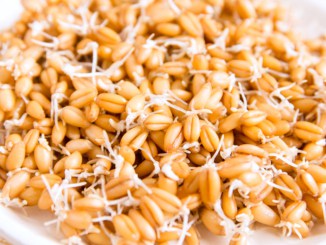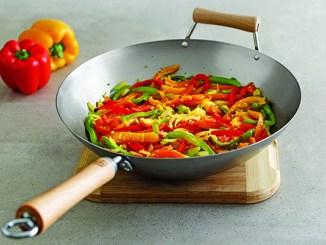
A popular and inexpensive staple in Mediterranean kitchens, the leek offers culinary flexibility for creating both simple and elegant meals.
Known in France as “poor man’s asparagus,” leeks have a classic role as a stock and soup enhancer but also can add flair as a garnish and star as a featured ingredient. Leeks have a unique flavor, texture and gelling quality that can be central to the success of a dish, making them preferable to onions, shallots or scallions in certain applications.
Available year-round, leeks have seasonal peaks in summer and winter. Wild leeks, or ramps, are available primarily in April and have an intense, garlicky flavor, but they are a different species than cultivated leeks. When purchasing leeks, look for a white base, firm stalk and supple, smooth green leaves. Large leeks with more dense fibers require more time to cook, so select similar-sized leeks for consistent cooking.
Leeks in the Kitchen
While leeks cook quickly, like many leafy green vegetables, they require some effort to clean. Leeks are known as “dirty” vegetables due to trenching, a technique for piling soil around the base of the stalk to blanch it white, which then traps grit between layers as the stalk grows.
To clean a leek, remove roots and tough outer leaves, then cut the stalk in half lengthwise and run water through the layers or swish the halves in a bowl of water.
Heat quickly turns leeks silky, making them ideal in gratins, frittatas and soups such as vichyssoise (see recipe). Gently sauté leeks in butter for a fondu (French for “melted”) texture for side dishes or poultry and fish toppings. Leeks are a must in French dishes such as pot-au-feu soup, flamiche (leek pie) or poireaux vinaigrette (leeks with a warm vinaigrette).
Stews, soups or stocks thicken when leeks are added as an ingredient or as a bouquet garni flavor bundle (leek leaves wrapped around thyme, parsley and bay leaves.) When cooked, leeks develop a slippery texture that gels when cooled, adding body to liquids.
Other ways to cook leeks include slicing them into strips to pan fry or sauté for a crispy garnish on soup, pizza or fish; charring or grilling whole leeks to serve halved and stuffed; or braising them for tender centers with crispy edges.
Mince the tender white base of leeks to make a sweeter and more subtle replacement for shallots in a vinaigrette. Cabbage-like flavors may be perceived in the greener sections and inner stalk where the strongest flavors are concentrated. Like onions, leeks have sulphur-containing amino acids that contribute “meaty,” savory flavors to dishes.
Leeks in the Clinic
Leeks often are used more for their tender, sweeter white sections than for their leafy greens. Despite its white-green appearance, choosemyplate.gov categorizes the leek as a dark green vegetable. The greener sheaths contain a more concentrated amount of diverse flavonoids such as kaempferol. Some epidemiological studies link kaempferol with reduced risks of developing multiple cardiovascular diseases and cancer.
A one-cup serving of raw leeks is an excellent source of vitamins K and A, and a good source of folate, iron, and vitamins B6 and C. Like other green vegetables, leeks contain carotenoids including lutein, which is linked to healthy eyesight and protecting the macula and cells from free radicals.
Leeks in Quantity
Cleaned, cut and frozen leeks are available for foodservice use, but freezing compromises flavor and textures. While frozen leeks are not ideal for cooked dishes or garnishes, they do work well for making stock.
Unlike onions and garlic, leeks require refrigeration for storage. Untrimmed and unwashed leeks can be stored in the refrigerator for up to two weeks; cooked leeks should be eaten within a couple of days.












